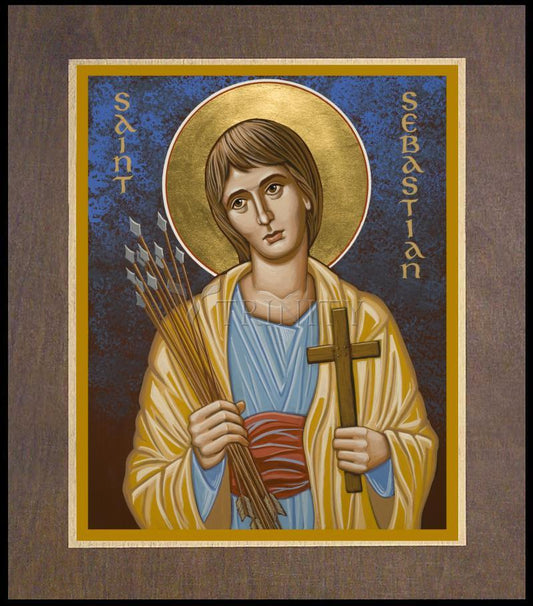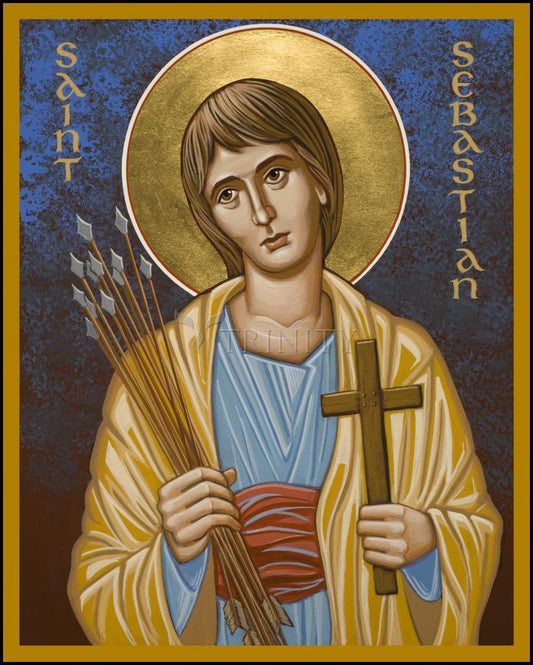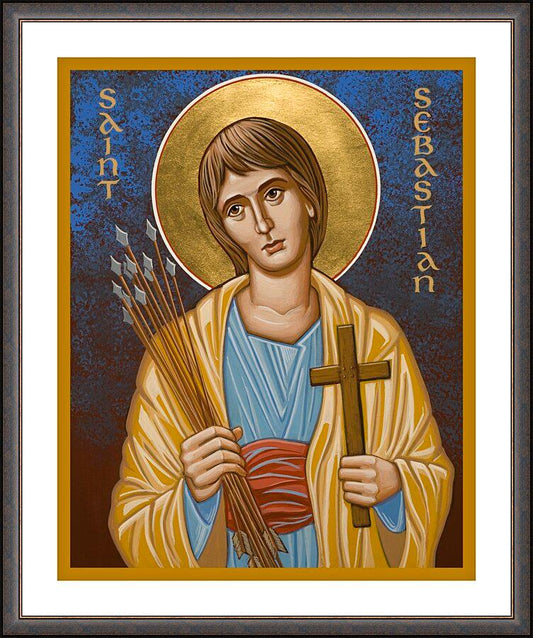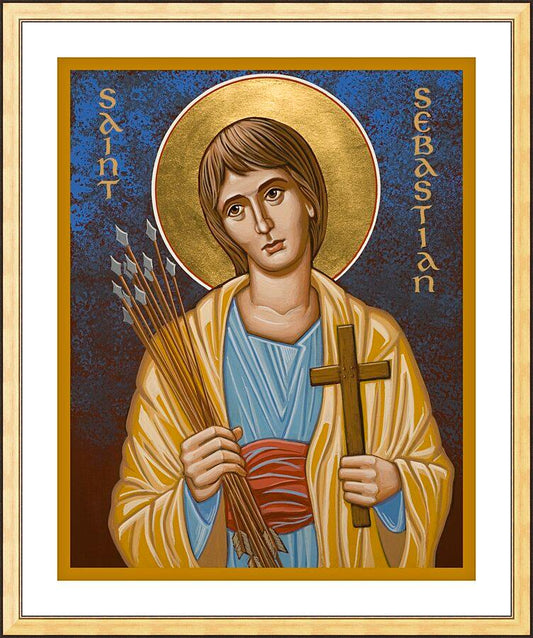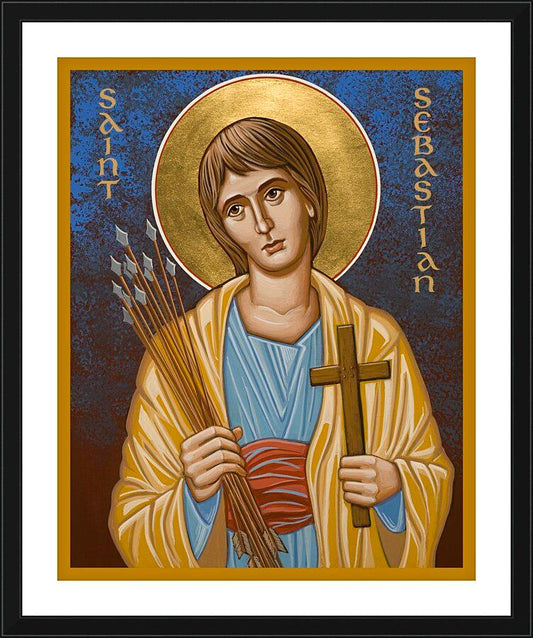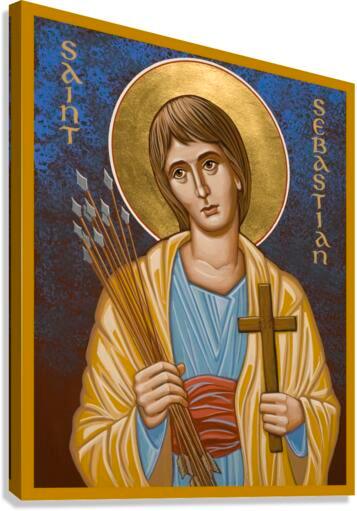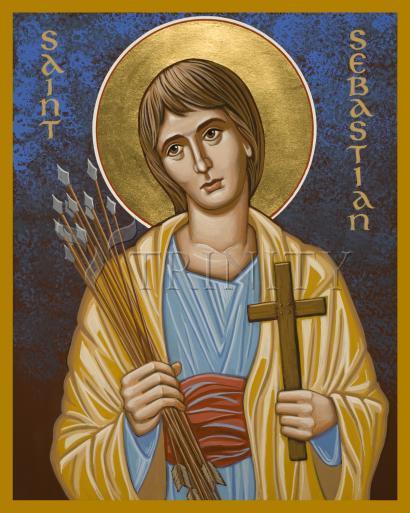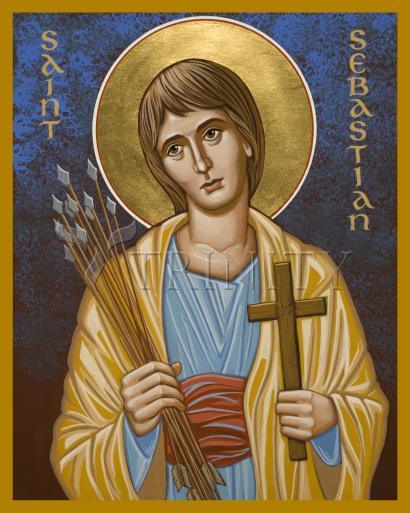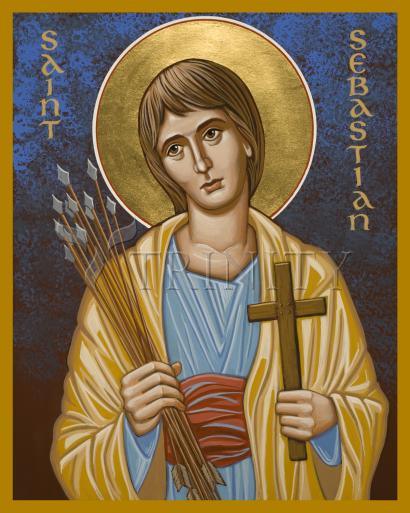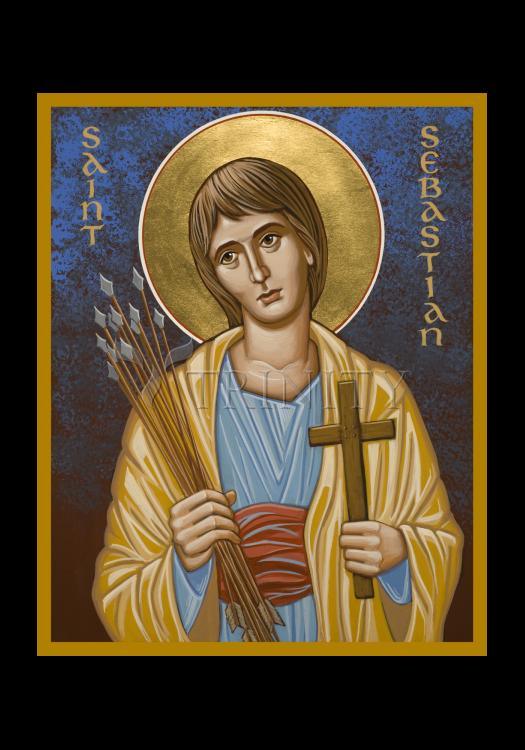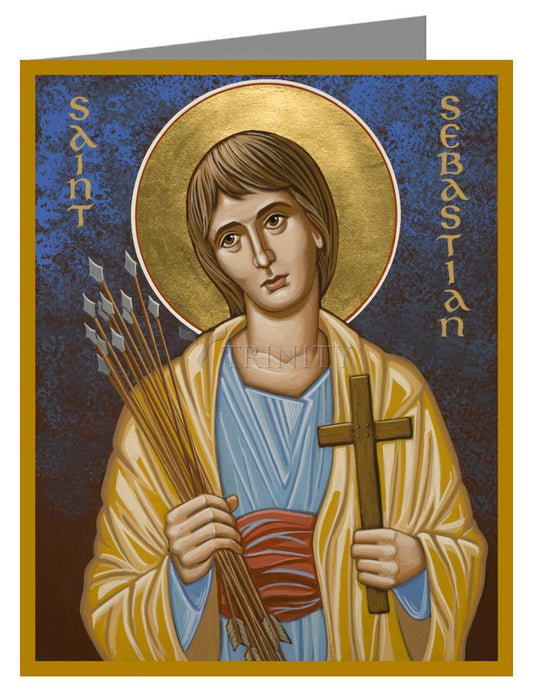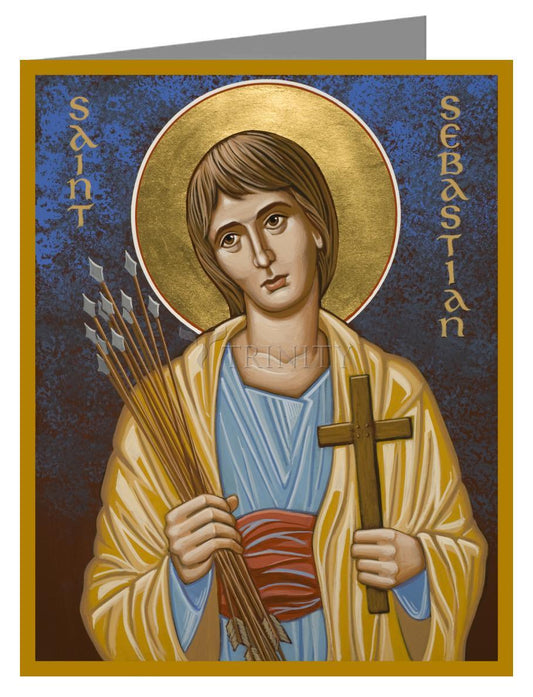Almost nothing is historically certain about Sebastian except that he was a Roman martyr, was venerated in Milan even in the time of Saint Ambrose and was buried on the Appian Way, probably near the present Basilica of St. Sebastian. Devotion to him spread rapidly, and he is mentioned in several martyrologies as early as 350.
The legend of Saint Sebastian is important in art, and there is a vast iconography. Scholars now agree that a pious fable has Sebastian entering the Roman army because only there could he assist the martyrs without arousing suspicion. Finally he was found out, brought before Emperor Diocletian and delivered to Mauritanian archers to be shot to death. His body was pierced with arrows, and he was left for dead. But he was found still alive by those who came to bury him. He recovered, but refused to flee.
One day he took up a position near where the emperor was to pass. He accosted the emperor, denouncing him for his cruelty to Christians. This time the sentence of death was carried out. Sebastian was beaten to death with clubs. He was buried on the Appian Way, close to the catacombs that bear his name.



